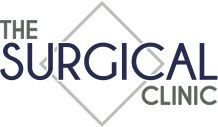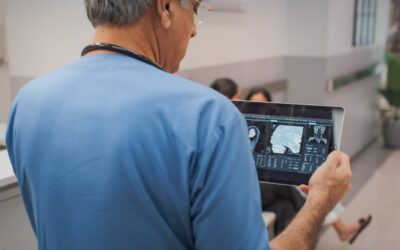Body & Breast Procedures
Abdominoplasty
(Tummy Tuck)
A tummy tuck, also known as abdominoplasty, is the surgical removal of excess skin or fatty deposits from the abdomen, along with the repositioning to tighten abdomen muscles.
The abdominoplasty procedure lasts from one to five hours, depending upon the patient’s unique physiology. An incision is made just above the pubic bone area, going horizontally across the lower abdomen. Skin is stretched away from the muscle tissue, and excess skin is removed. Muscle tissue is tightened, the incision closed and the skin stitched back into place.
Following a tummy tuck surgery, patient orders include rest, limited movement and pain medication, if needed, to alleviate and pain and discomfort. Once stitches are removed, normal activities can be removed, generally within two weeks. In some cases, it may take up to a year for the patient’s body to adapt to these abdominal changes.
Reasons for considering a tummy tuck include:
- dieting and exercise are not enough to improve the abdomen area
- excessive skin accumulation after weight loss
- loss of skin elasticity or loose abdomen muscles due to pregnancy
- removal of skin and fat deposits and tightening of abdomen muscles to have a flatter and tighter stomach.
Liposelection
(Contouring)
LipoSelection® is a technique of body contouring, eliminating fat and reshaping areas where the patient would like to lose weight, such as waist, thighs, buttocks, arms, neck or chest. The LipSelection® VASER Lipo technique targets specific areas of the body, using ultrasonic waves to break up and separate fat cells for removal while leaving vital tissues unharmed.
Unlike traditional liposuction, VASER Lipo results in less trauma, faster recovery and minimally invasive procedures delivered in a clinical setting and smooth, tight results.
Body Lift
Clinically known as a belt lipectomy, a body lifting procedures that sizes and reshapes sagging body contours. With aging, skin loses some elasticity, causing the midsection to lose its shape and firmness. This procedure removes loose skin and fat deposits.
Body lifts can be applied to the lower torso (abdomen, waist, inner/outer thighs, buttocks, hips and upper legs). Liposuction may be used in conjunction with the Body Lift.
Reasons for a Body Lift
- Correct sagging skin and fat due to aging or excessive weight loss.
- Remedy weight gain and stretched skin caused by multiple pregnancies
- Reshape mid-body contour.
What to Expect
The exact procedure will vary with each patient. Generally, a Body Lift requires an incision following the upper and/or inner thigh to the waistline. Excess skin is removed along with underlying fat deposits. The remaining skin is pulled taught and sutured into place.
The surgery can last between 3-7 hours and will require general anesthesia. In more extensive surgeries the incision will go completely around the waist and lower back.
Recovering from Body Lift
Patients will require plenty of rest and limited movement to speed healing. Bandages will be applied to minimize swelling and to provide support. Frequently, drainage tubes are left in place. Scars resulting from the incisions are permanent but carefully placed to minimize visibility.
Patients do report minor pain associated with the surgery, which is managed by oral pain medications. Recovery times will vary based on the extent of the procedure. Complications from the surgery are rare. However, careful compliance with the post-operative directions will help minimize potential problems.
Liposuction
Liposuction (Lipoplasty) is a body sculpting surgery that removes excess fat that has stubbornly stayed despite diet and exercise. Liposuction does not replace diet and exercise, but can eliminate stubborn areas of accumulated fat.
The procedure can be applied to many areas of the body and it is common for the procedure to be applied on multiple areas during one surgery. The procedure is successful in reducing love handles, saddlebags, double chin, a bulge around the waistline or other areas of fatty deposits. For this reason, liposuction is a common part of mommy makeover surgery packages.
Reasons for Liposuction
- Create a more proportioned figure
- Eliminate fat from chin and neckline
- Remove back and upper arm fat
- Slim stomach and waistline
- Trim down hips and buttocks
- Contour thighs, knees, calves, and ankles
Is Liposuction Right for Me?
The ideal surgical candidate is someone who is in good physical condition with areas not responding to a regular diet and exercise plan. During your initial consultation, different options for procedures will be discussed. Tumescent (ultrasound) Liposuction could be an option. The length of a Liposuction procedure will vary from 30 minutes to several hours depending on the amount of fat being removed.
Recovering from Liposuction
The ideal surgical candidate is someone who is in good physical condition with areas not responding to a regular diet and exercise plan. During your initial consultation, different options for procedures will be discussed. Tumescent (ultrasound) Liposuction could be an option. The length of a Liposuction procedure will vary from 30 minutes to several hours depending on the amount of fat being removed.
Fat Transfer
Sometimes a patient’s own unwanted areas of body fat can be used to enhance other areas of the body. Aging and gravity along with weight and hormone fluctuations change the body contour.
Unwanted fat in the abdomen, back, buttocks and thigh can be removed with liposuction and then injected into areas that need filling out. The following areas are popular options for fat transfer surgery:
- Breasts
- Buttocks
- Cheeks
- Chin
- Forehead
- Jawline
- Lips
- Temples
- Under the eyes
For facial areas, fat injections can reduce frown lines, depressions, and crow’s feet. These treatments can be done in conjunction with a facelift.
Breast Enhancement
Women with smaller breasts can achieve fuller breasts, natural-looking results with a Fat Transfer Breast Augmentation. Details about breast enhancement surgery can be found under the Breast category on this page.
Buttock Enhancement
Fat transfer to augment the buttock (sometimes called the Brazilian Butt Lift) is a procedure that may last between 1-4 hours. Fat will be removed from other areas of the body and transferred to the buttock with the use of a local anesthetic. If Liposuction is performed over many areas of the body, general anesthesia may be used.
What Happens During Fat Transfer Surgery?
In all cases of liposuction fat transfer, a medicated fluid is injected into the area where the fat is to be removed. This fluid carries a numbing agent and also expands the tissues making removing fat cells easier. Once the area is numbed, the removal process will begin.
Body fat is stored on top of your muscles, just under the skin. A suction device removes the fat. Your surgeon will make a series of incisions in your skin to enable a small tube-like suction device to reach the fat tissue. The tube will leave shallow tunnels under your skin that will collapse over the weeks following the surgery.
The harvested fat cells will be examined, isolated and cleaned. The cells are then combined with stem cells before being injected back into your body. The same tube-like device will implant them into the new area.
Sometimes the incision areas will require a stitch to close them and sometimes they are left to heal on their own. A surgical drain may be inserted in order to prevent fluid buildup. Absorbent pads are applied to protect the incision sites.
Recovering from Fat Transfer Surgery
Generally, you will be allowed to go home within 2-4 hours of your surgery. You will probably wear a compression garment for a few weeks to support the contour and minimize swelling. Pain medication may be needed for the first few days.
Expect to rest for several days before you return to daily activity. Some bruising is normal and typically fades within a couple of weeks. Swelling can occur for several months following the procedure.
Surgical bandages and drains will be removed within the first week. Any non-dissolvable stitches will be removed in 7-10 days. You will need to follow instructions about sleeping and sitting positions in order to avoid complications.
Understanding Risks and Results of Fat Transfer Surgery
You will notice immediate results from your procedure, but it may take up to one year before final results are produced. Occasionally, more than one procedure will be required to achieve your desired result.
There are some risks for the development of cysts, infection, small mineral deposits and death of the fat cells. You and your surgeon should discuss these prior to the procedure.
Your results will change as you gain or lose weight and Fat Transfer does not prevent the growth of additional fat in the area from which it was harvested. Further, over time, transferred fatty tissue may disperse. Proper expectations and maintenance should maintain your results or several years.
Breast
Mammoplasty
(Breast Augmentation)
Breast augmentation, also known as mammoplasty, is a surgical enhancement procedure to change the size and shape of a woman’s breasts. Reasons for considering breast augmentation include:
- increase breast size if breasts are too small
- increase breast volume after pregnancy and nursing
- equalize difference in breast size
- breast reconstruction following a mastectomy or injury
During this surgery, a small incision is made to insert a breast implant into the breast. Normally performed while the patient is under general anesthesia, there are several locations for the incision – lower portion of the breast, in the armpit, around the areola or in the belly button.
During surgery, the breast tissue is raised in order to create a pocket under the tissue or chest wall muscle. The implant (usually containing a saline solution or silicone gel) is inserted.
Following surgery, patient orders include rest, limited movement, bandages to minimize the movement of the breasts and pain medication if needed. After the bandages are removed, a surgical bra must be worn for several weeks.


Breast Reduction
Breast reduction surgery, also known as reduction mammoplasty, is a surgical procedure that reshapes large breasts in order to make them smaller, lighter and firmer. Reasons for considering breast reduction include:
- back, neck or shoulder pain caused by heavy breasts
- sagging breasts due to size
- oversized breasts for body size
- restriction of physical activity due to heavy and oversized breasts
While surgical techniques vary, the most common procedure is an incision that circles the areola with the incision going down and following the natural curve of the breast. Excess tissue, fat, and skin are removed and the nipple and areola repositioned higher and stitched in place.
Following surgery, patient orders include rest, limited movement, bandages to minimize movement of the breasts and pain medication if needed. Once the bandages are removed, a specialized surgical bra must be work for several weeks to assist in healing.
Mastopexy
(Breast Lift)
A breast lift, also known as a mastopexy, is a surgical procedure to raise and reshape sagging breasts. Reasons for considering breast lift surgery include:
- raise the breasts due to sagging caused by aging and gravity
- firm the breasts if they have lost substance due to pregnancy and nursing
- realignment of the nipples if they point down or to the side
- return of suppleness after weight loss
This type of plastic surgery most commonly involves an anchor-like incision along the underside of the breast. When the excess skin has been removed, the nipple and areola are moved to a higher position. The skin surrounding the areola is brought down and together to reshape the breast.
Recent innovations in breast lift techniques include minimally invasive incision techniques. Surgery usually takes 90 minutes to three hours. Following breast augmentation surgery, patient orders include rest, limited movement, bandages to minimize movement of the breasts and pain medication if needed. After the bandages are removed, the patient must wear a specialized surgical bra for several weeks to aid in healing.
Breast Reconstruction
With a diagnosis of breast cancer, we know that you want both the best surgical options for removing and recovering from the disease. Because breast cancer surgery usually removes a significant amount of tissue, breast reconstruction surgery is available to replace the lost tissue.
Sometimes the reconstruction and cosmetic surgery can begin at the same time as the diseased tissue is removed. In some cases, you may want or it may make the best sense to recover from the first surgery and deal with cosmetic surgery later.
At The Surgical Clinic, breast specialist cancer surgeons work collaboratively with reconstruction and cosmetic surgeons and you to make sure that you understand your options so that, together, you make the choices that are right for you.
Other Surgeries and Links
LipoSelection®
Blog Articles
Plastic Surgery Trends: Summer 2025
Curious about what the plastic surgery trends of summer 2025 will be? Allow the surgical experts at The Surgical Clinic to help you discover the...
Nerve Preservation Techniques in Reconstructive Plastic Surgery to Enhance Sensory Recovery and Reduce Chronic Pain
Reconstructive surgery plays a crucial role in restoring function and appearance to your body after trauma, congenital abnormalities, or cancer....
Benefits of Imaging Before Plastic Surgery
Imaging prior to plastic surgery, regardless of the type, is beneficial for the patients and provider in more...
Reconstructive Surgery: Benefits, Risks, and Options
Are you or a loved one thinking about reconstructive surgery? Facing the need for reconstructive surgery can be overwhelming, especially when it...
Learn All About Microsurgery and Other Reconstructive Procedures
If you've had cancer surgery that altered your appearance or functionality, experienced injury, trauma, a congenital abnormality, or even a deeply...
Finding Out a Loved One has Breast Cancer
Breast cancer is an alarming reality that affects countless people around the world. In the United States, approximately 1 in 8 women will develop...






